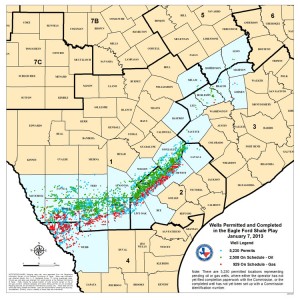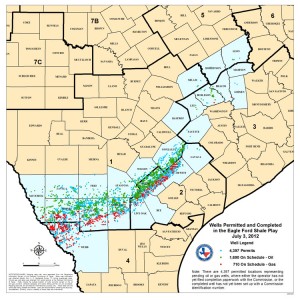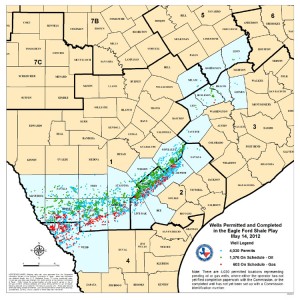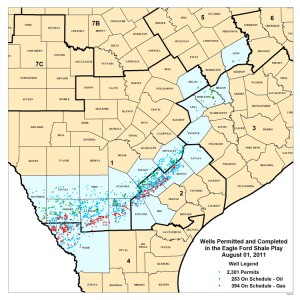Top Eagle Ford Questions Received by the Texas Railroad Commission
Source: Texas Railroad Commission
http://www.rrc.state.tx.us/eagleford/
Top Questions Asked about the Eagle Ford
1. What are the sizes of the proration units for the Eagle Ford Shale Fields?
- Presently, the proration units range from 40 acres to 640 acres. Need to review the individual field rules for each of the Eagle Ford Shale Fields.
- 2. Explain why a surface location for horizontal wells is not required to be located on the lease that is being drilled?
- Many wells are being drilled horizontally or deviated from offsite locations to reach potential producing horizons that may be beneath city parks, water bodies or housing developments, where a surface location may not be desirable or available. It is not unusual for an operator to obtain surface rights from which to drill a well from an adjacent, more desirable location.





